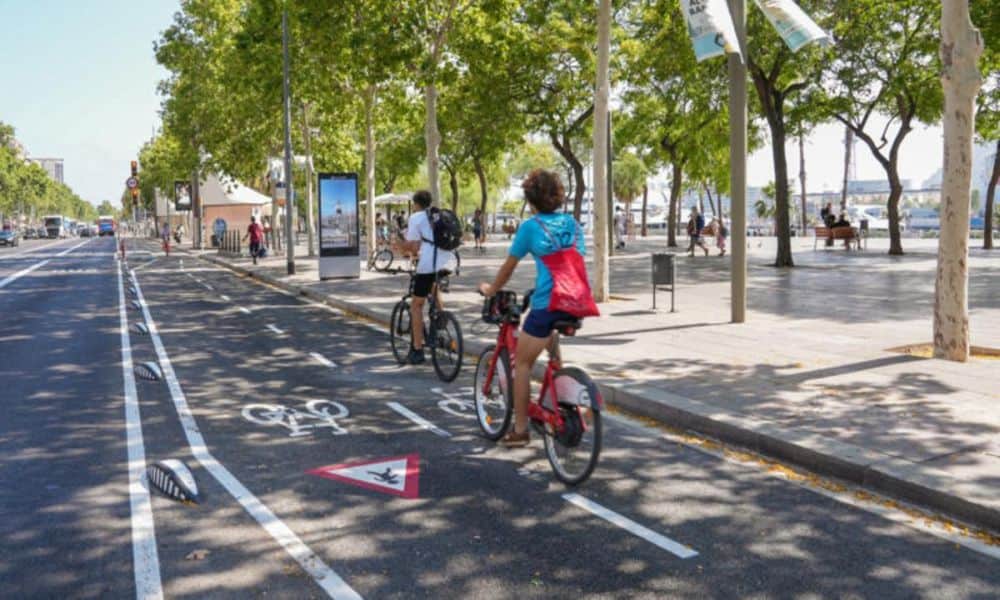
New lane located on the roadway
It is a new, bi-directional lane located on the roadway near the port side side sidewalk. In addition, it has a width of 3.5 meters and has another 0.5 meters in which the separator pieces are involved.
In addition, this new cycling infrastructure provides signaling and traffic lights and 2 bus stops with a platform. This means that cyclists will be able to give priority to pedestrians when getting on and off the bus.
Improved crosswalks
For this new cycling infrastructure, the project seeks to improve pedestrian crossings, change existing traffic light regulators, move a charging point for electric motorcycles, change existing traffic light regulators and install a lighting column.
Configuring the roadway in the Joan de Borbó promenade
The implementation of this new bike lane configuring the roadway on Paseo de Joan de Borbó becomes as follows: the seaward section involving a bi-directional bike lane, a traffic lane and a bus lane.
If going in the city direction, a service curb, a traffic lane and a bus lane will be placed in the section between Pepe Rubianes street and Escar street. The section between Ginebra Street and Pepe Rubianes Street will have two traffic lanes and a bus lane.
This is how Barcelona becomes part of the new stretch of cycling infrastructure. In this sense, it will be easier to link the city with the seafront by means of the Paseo de Picasso and Via Laietana bike lanes.
Creating a convivial atmosphere
This new cycling route, which includes the port area, is added to the existing bike lanes in this area, which are located on Paseo de Colom, Paseo de la Circumvalación, Avenida del Marqués de la Argentera, Calle del Doctor Aiguader and Paseo Marítimos. Of course, with this new axis, the sidewalk is freed from the passage of vehicles. This will help avoid conflicts and create a harmonious environment for pedestrians.
It is worth noting that, during this mandate, this Barcelona City Council expanded 23.2 kilometers of cycling infrastructure, reaching 264 kilometers of bike lanes during the summer.



